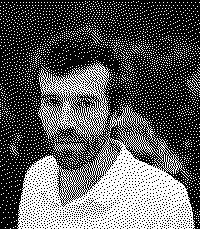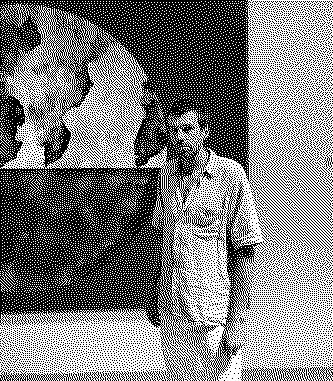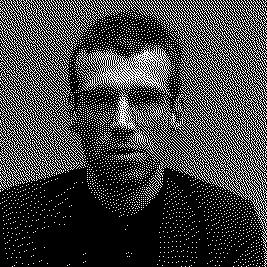Artists/Harold Ancart
Fast Facts
Distinct Methods with Oilstick
Ancart's work is characterized by a spontaneous and intuitive use of color and form. His painting technique often involves layering and scraping away paint, creating textured, dynamic surfaces that convey a sense of movement and depth.
Multidisciplinary Approach
Ancart is known for his multidisciplinary approach, working across a range of mediums including painting, drawing, and sculpture. This versatility is a hallmark of his artistic practice.
Themes of Abstraction and Surrealism
Natural and Urban Influence
Ancart's work often draws from both natural landscapes and urban environments, reflecting his interest in the interplay between the two. His art transforms everyday objects and scenes into explorations of color and form (Gagosian) (Art in Context) .
Biography



Harold Ancart, born in 1980 in Brussels, Belgium, is a notable figure in contemporary art, recognized for his multifaceted approach that encompasses painting, sculpture, and site-specific installations.
He completed his Master of Fine Arts at École Nationale Supérieure des Arts Visuels de La Cambre in 2007 and has since established his practice in New York City, where he has lived and worked since 2007 (David Zwirner) (Wikipedia).
Ancart has garnered attention for his dynamic works that often draw inspiration from the natural landscape and urban environments, navigating between abstraction and representation. A significant project that highlights his engagement with public spaces is the "Subliminal Standard" (2019), a Public Art Fund project in Brooklyn, New York. This installation, a 16-foot-high concrete sculpture, pays homage to the city's handball courts, reflecting on their layers of graffiti, damage, and patching as gestures of abstract painting (Wikipedia) (Ocula Art).
His paintings exhibit a fascination with surreal and science fiction-esque imagery, presenting abstract depictions of scenes like geometric flowers against dark backgrounds or iceberg-like forms on crimson oceans. These works demonstrate Ancart's interest in exploring the boundaries of form and color, blending elements of the real and the imagined (Ocula Art).
Ancart's contributions to contemporary art have been recognized through solo and group exhibitions at prestigious venues worldwide, including the Stedelijk Museum voor Actuele Kunst in Ghent, Centre Pompidou-Metz in France, and The Menil Collection in Houston. His works are part of the collections of several major institutions, such as the Solomon R. Guggenheim Museum and Whitney Museum of American Art in New York, Fondation Beyeler in Basel, and the Hirshhorn Museum and Sculpture Garden in Washington, D.C., among others (David Zwirner) (Wikipedia) (Ocula Art).
In recent developments, Ancart has been represented by Gagosian since 2022, indicating his growing significance in the global art scene. A solo exhibition of his work is scheduled with the gallery in New York for 2023, further cementing his status as an artist of considerable influence and innovation (Ocula Art).
Importance
Harold Ancart is considered an important artist for several reasons that underscore his contribution to contemporary art:
Multidisciplinary Approach
Ancart's versatility across painting, sculpture, and large-scale installations allows him to explore and express complex artistic ideas in diverse mediums. His ability to move fluidly between these forms demonstrates a broad skill set and a deep understanding of space, form, and color (Ocula Art).
Unique Perspective on Everyday Environments
Through his work, Ancart often transforms ordinary scenes into profound artistic expressions. His public installation "Subliminal Standard," inspired by New York's handball courts, highlights how he finds beauty and depth in urban decay and everyday structures, turning them into significant cultural statements (Ocula Art).
Engagement with Nature and Urban Landscapes
Ancart's art frequently blurs the lines between the natural world and urban life, offering viewers new perspectives on their surroundings. His paintings and sculptures often feature abstract representations of landscapes, seascapes, and botanical forms, inviting reflection on the relationship between humanity and the environment (Ocula Art).
International Recognition and Exhibitions
Ancart has been exhibited in prestigious institutions and galleries worldwide, from the Solomon R. Guggenheim Museum in New York to the Centre Pompidou-Metz in France. This global recognition speaks to the universal appeal and significance of his work (David Zwirner) (Wikipedia) (Ocula Art).
Inclusion in Major Collections
His works are included in the collections of some of the world's leading art museums, including the Whitney Museum of American Art, Fondation Beyeler, and the Hirshhorn Museum and Sculpture Garden. The acquisition of his works by these institutions attests to his lasting impact on the contemporary art landscape (Wikipedia) (Ocula Art).
Innovative Use of Materials and Techniques
Ancart's experimentation with different materials and his innovative techniques have contributed to a distinctive aesthetic. Whether through the textured layers of paint in his canvases or the material choices in his sculptures, Ancart pushes the boundaries of traditional art-making practices to create compelling new visual experiences (Ocula Art).
Technique
Oilstick
Ancart primarily uses oil sticks and graphite pencils. These materials allow him to achieve a rich texture and layered effect in his paintings, contributing to the tactile quality that characterizes his work (Gagosian) (Art in Context).
Surface and Framing
His canvases often come in custom-built frames, which he considers an integral part of the artwork. This approach enhances the presentation and impact of his pieces, giving them a distinct physical presence (Art in Context) (Gagosian) .
Exploration of Color and Light
Ancart's art is renowned for its exploration of color and light. He utilizes both vibrant and muted tones to create depth and dimension, manipulating light to influence the perception of his abstract forms. This interplay between color and light is central to his compositions, lending them a sense of movement and life (Art in Context) .









